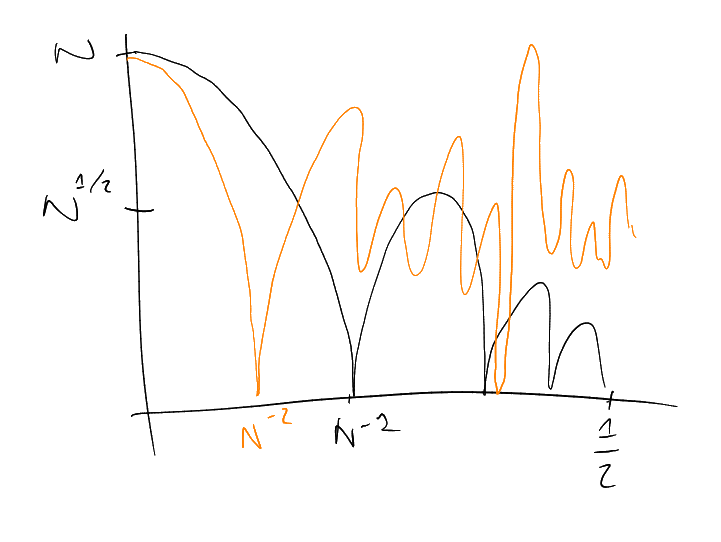2 Exponential sums in
Recall: studying . When
does not have (linear) structure,
expect (“sqrt cancellation”)
in an appropriate sense (in ),
more than when
is structured.
Linear
vs
convex
.
Have
|
|
Have
on , and
on
.
does not
distinguish .
does not distinguish.
However,
does.
What about ?
We don’t usually study this range because the estimates tend to be trivial / not interesting.
Focus on .
Preduct size of
Square root cancellation lower bound:
|
ö |
.
Constant integral lower bound:
,
.
Note that for the
bound, is
bigger than
(as long as ),
so the constant integral dominates!
For , if
, the square root cancellation
dominates, but for
the constant integral takes over.
Assuming:
Theorem 2.1.
-
- Then:
|
|
Proof.
Consider: ,
.
Note that this is sharp when .
. Focus
on .
|
|
The integral vanishes unless .
Number Theory lemma: If ,
then
Follows from unique prime factorisation.
Warning.
The above lemma is false.
See correction later.
For fixed ,
|
|
Hence
We will now use
to mean up to
powers of .
:
,
,
,
.
:
|
|
Assuming:
Theorem 2.2.
-
Then:
|
|
Sharp by .
Positive take away: estimates are sharp, proofs are elementary. Easy to think of sharp examples.
Number Theory counting idea shows:
Sharp, .
Strichartz estimate for periodic Schrödinger equation, observed by Bourgain in 1990s.
Negatives: on
, but this technique can only
work on even integer values of .
,
only
sharp Strichartz estimates per Schrödinger until 2015!
2015: Bourgain-Demeter proved
sharp decoupling estimate. Gives sharp Strichartz estimate for Schrödinger in
for all
.
Proved earlier:
|
|
(where
means ).
Conjecture:
|
|
,
,
.
Example: .

